
pARC装置是由The Urban Conga设计,作为教堂山小镇社区和位于北卡罗来纳大学的Ackland艺术博物馆的开放式互动空间。The Urban Conga工作室通过与社区负责人和博物馆代表的一系列参与式设计研讨会设计了空间干预。来自社区和博物馆代表的反馈和对未来公共规划的意见共同形成了最终设计。Ackland艺术博物馆是教堂山的一座公共博物馆,馆藏丰富,但其提供的服务却鲜为人知。pARC被设计成坐落在博物馆的开放平台上,作为连接到街道的桥梁,作为对话、事件、教学和目前存在于Ackland馆内的其他设计的延伸。
pARC was designed by The Urban Conga toserve as an open-ended programmable space for the community of Chapel Hill andthe Ackland Art Museum, located at the University of North Carolina. The UrbanConga studio designed the spatial intervention through a series ofparticipatory design workshops with community stakeholders and museumrepresentatives. Feedback and input from the community and museumrepresentatives led to the final design of the space, as well as input onfuture public programming. The Ackland Art Museum is a free museum in ChapelHill that hosts a surplus of diverse programming within its doors, but itseemed many community members were unaware of the museum and what it had tooffer. pARC was designed to sit on the open terrace of the museum, serving as abridge to connect it to the street as a programmable extension of theconversations, events, teachings, and other programming that currently existswithin the doors of the Ackland.
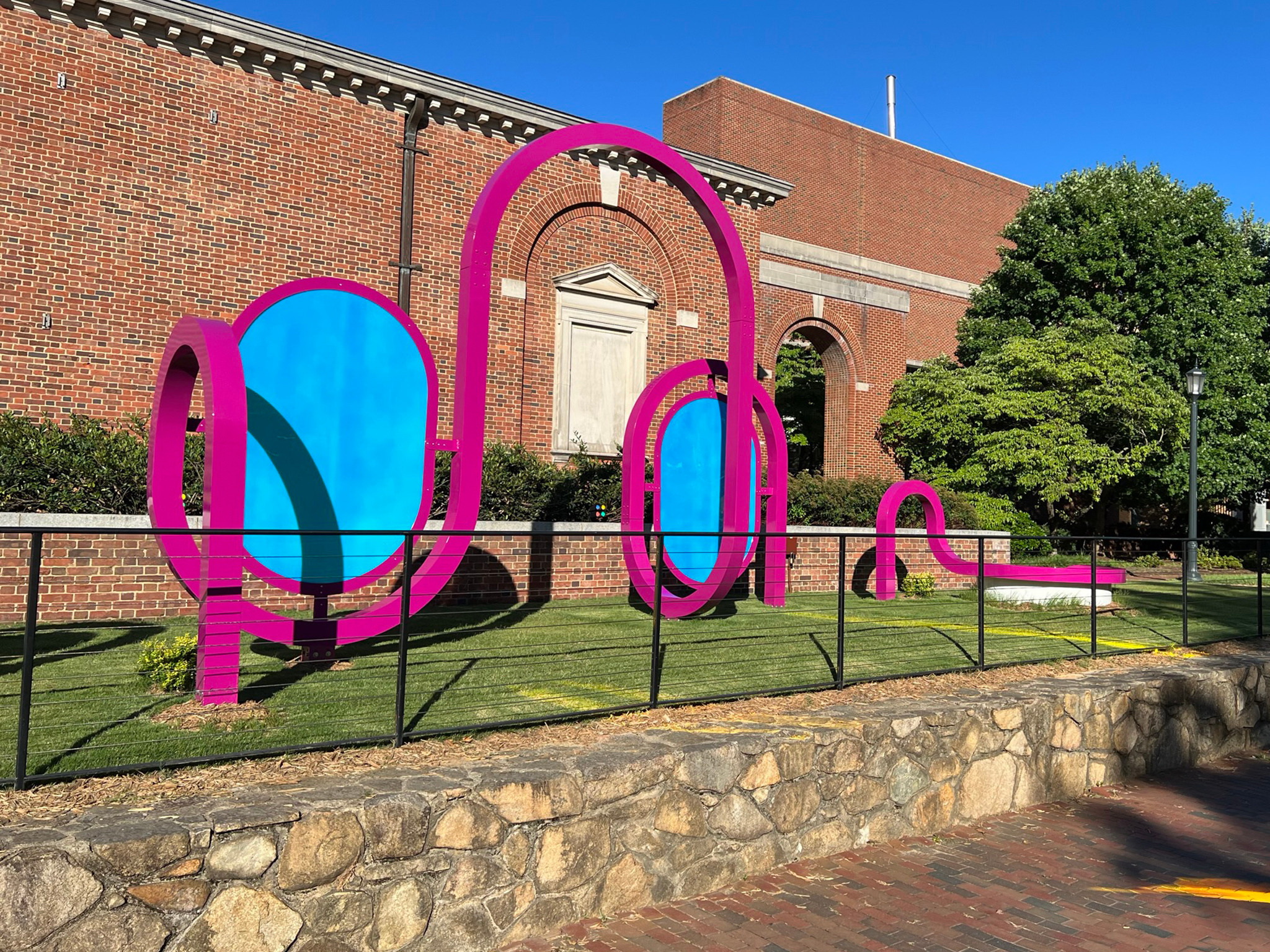
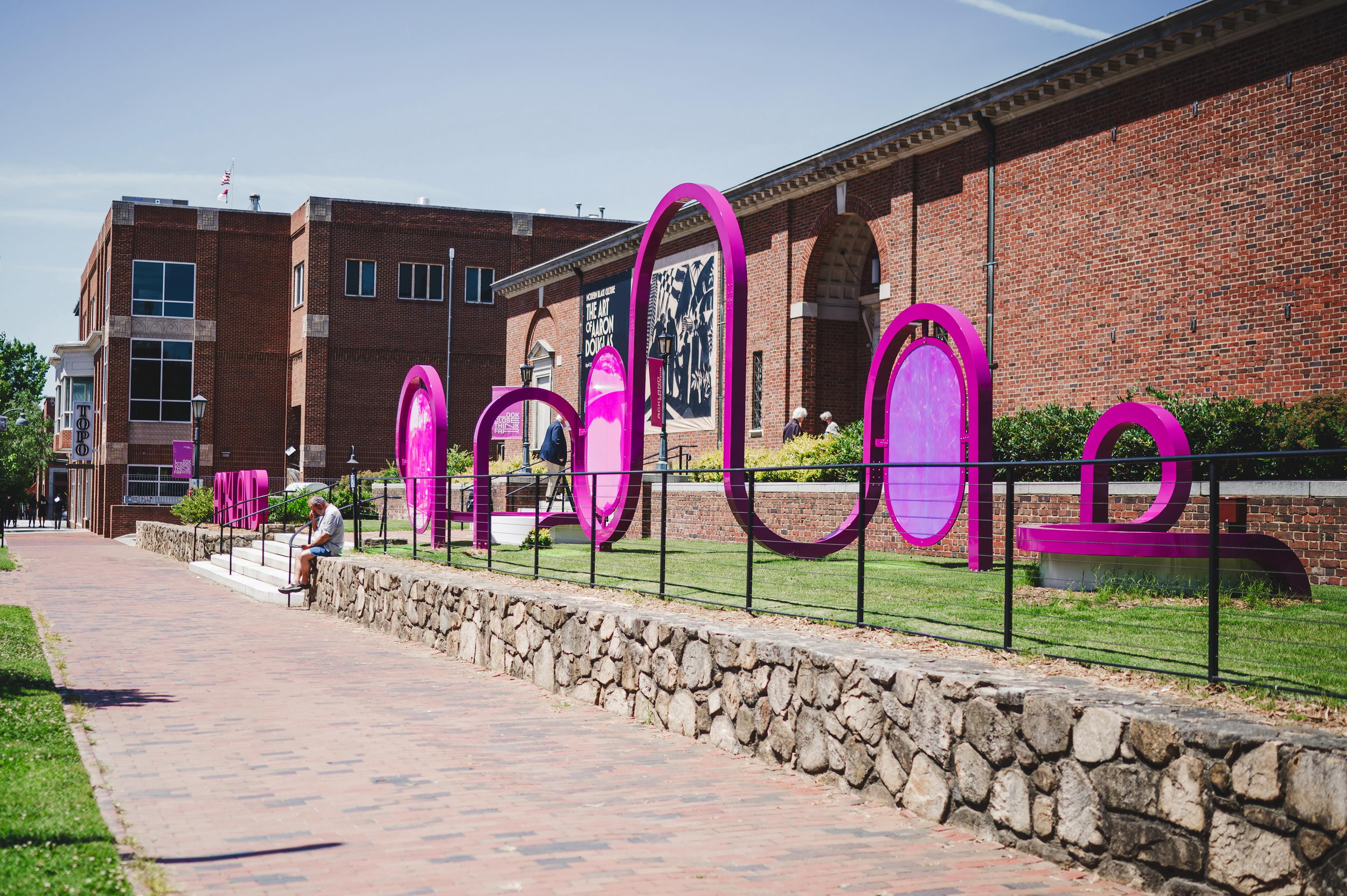
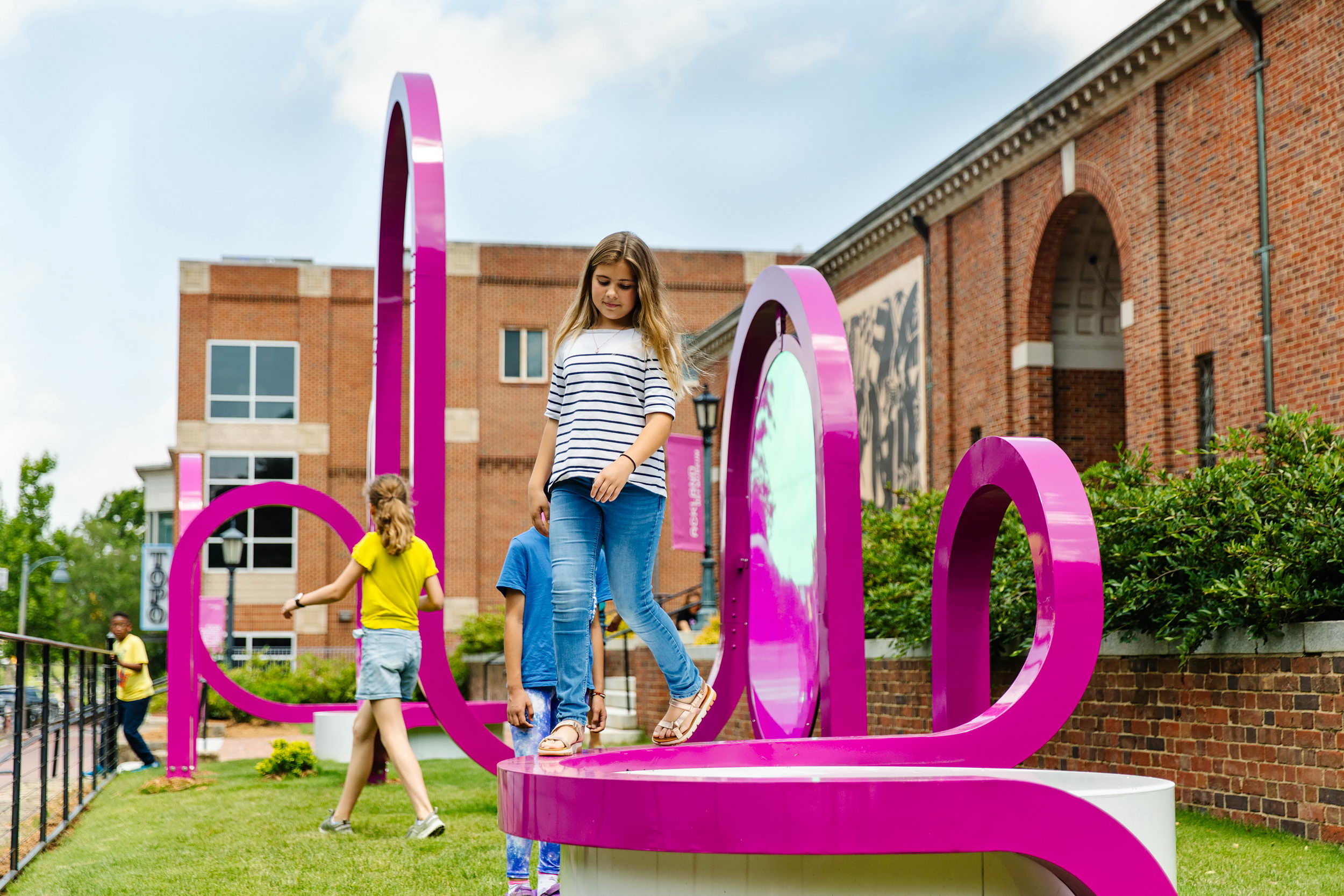
装置展示了如何利用游戏使艺术机构变得更加亲民,让艺术从“展台”上走下来,将工作和空间的所有权交给人们。装置邀请人们从街上走进博物馆,吸引那些以前不会驻足的人进入空间。该装置成为一个变革性的公共平台,为人们以新的方式提供了与博物馆、大学以及彼此间的互动。
The design shows how play can be utilizedas a tool in the democratization of art institutions, effectively removing artfrom the pedestal to allow people to take ownership of the work and the space.It invites people from the street into the museum, attracting people who mayhave previously been uncomfortable entering the space. The installation becomesa transformative communal platform, allowing all users to engage with themuseum, university, and each other in new ways.
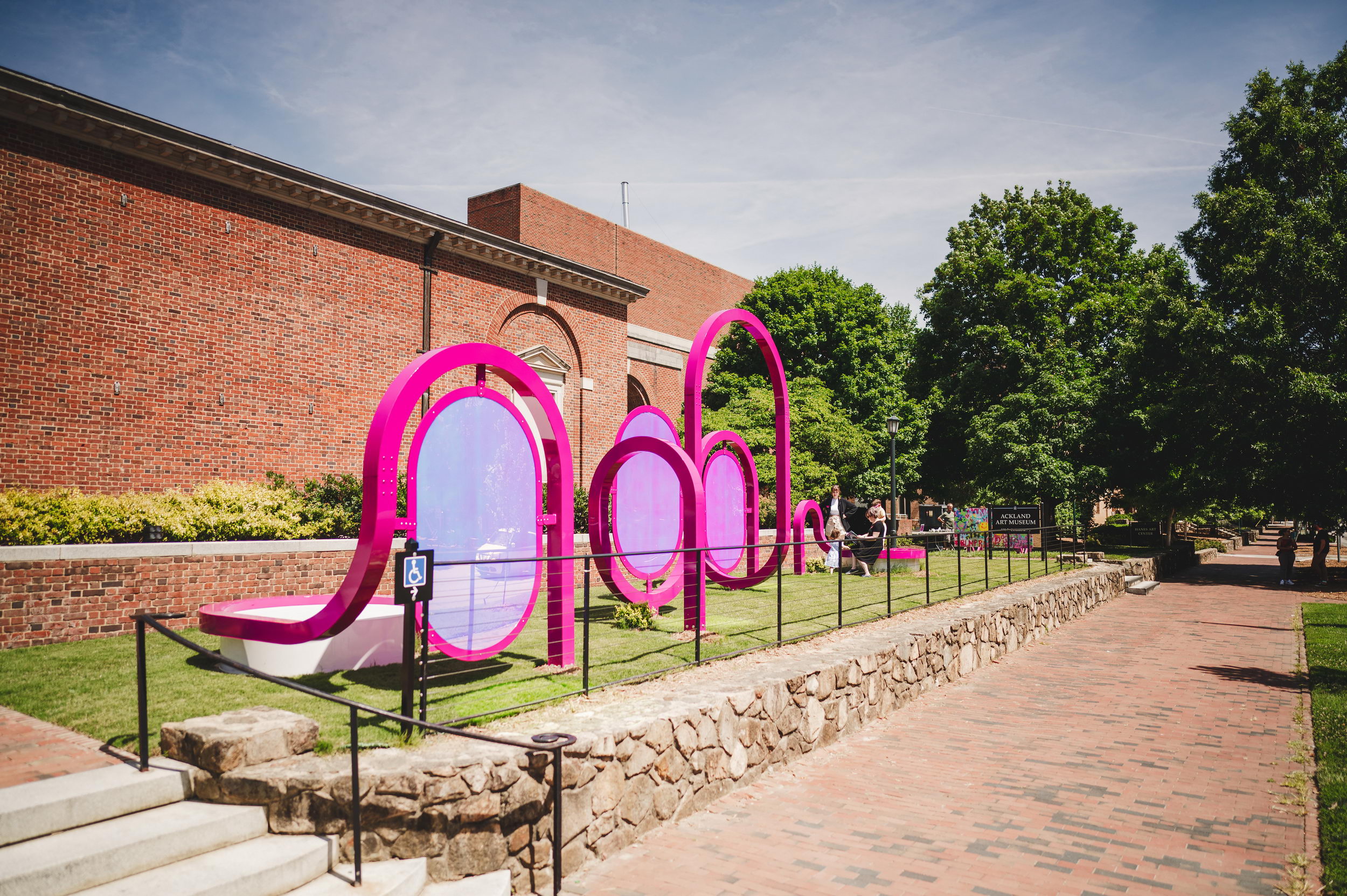
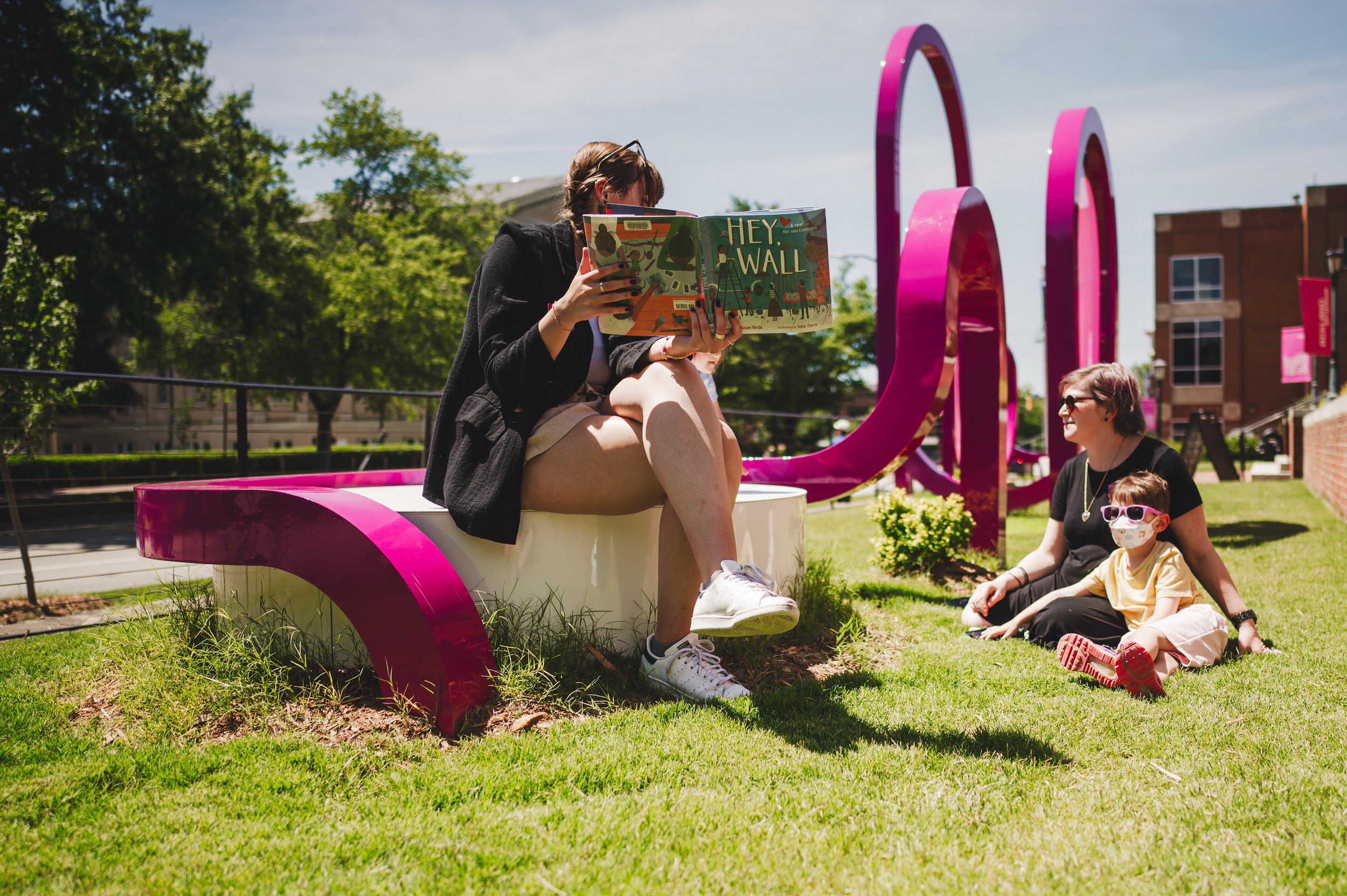
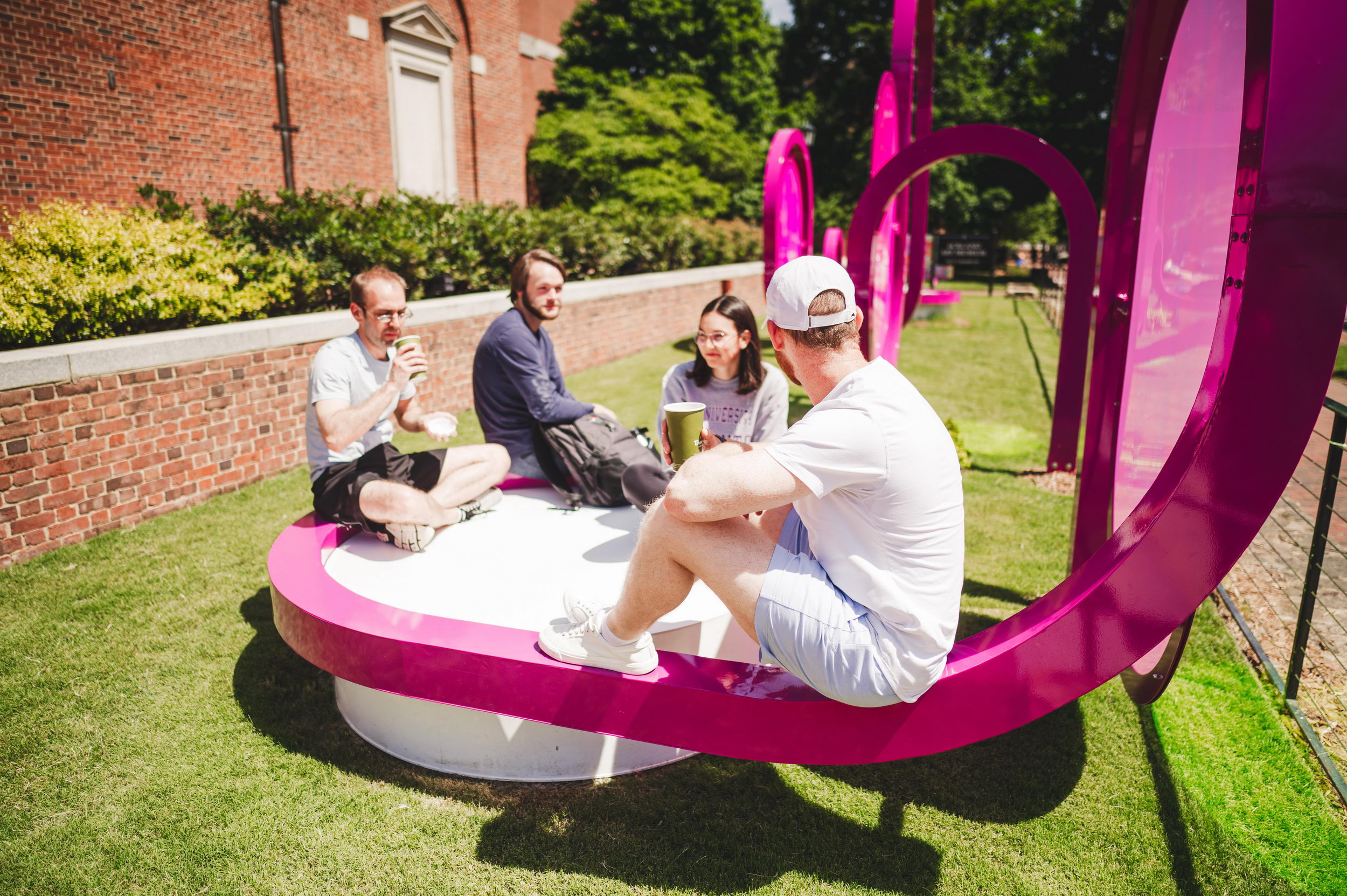
pARC的设计与博物馆的格鲁吉亚风格建筑相呼应,又形成对比。装置采用了对称构图,并将其分解成一系列相互连接的弧线。这一系列的弧线似乎从地面上生长出来,构成了各色的互动空间,允许人们将自己的身份融入到作品中。pARC作为一个灵活的公共空间,为人们提供了无穷无尽的娱乐、收集、表演、教学、交谈甚至小憩的方式。空间形态与参观者的身份相呼应,并利用其可玩的设计来打破社交障碍并激发空间内的社区联系。
The design of pARC both mimics andcontrasts the Georgian-style architecture of the museum. The design takes thesymmetrical colonial composition and breaks it into a series of interconnectedarcs. These series of arcs appear to grow up from the ground to frame thevarious social spaces that allow users to put their own identity onto the work,the museum, and the surrounding space. pARC becomes a flexible communal spaceevoking endless ways to play, gather, perform, teach, converse, or even take anap. The spatial gesture takes on its users' identities and utilizes itsplayable design to break down social barriers and spark communal connectionwithin the space.
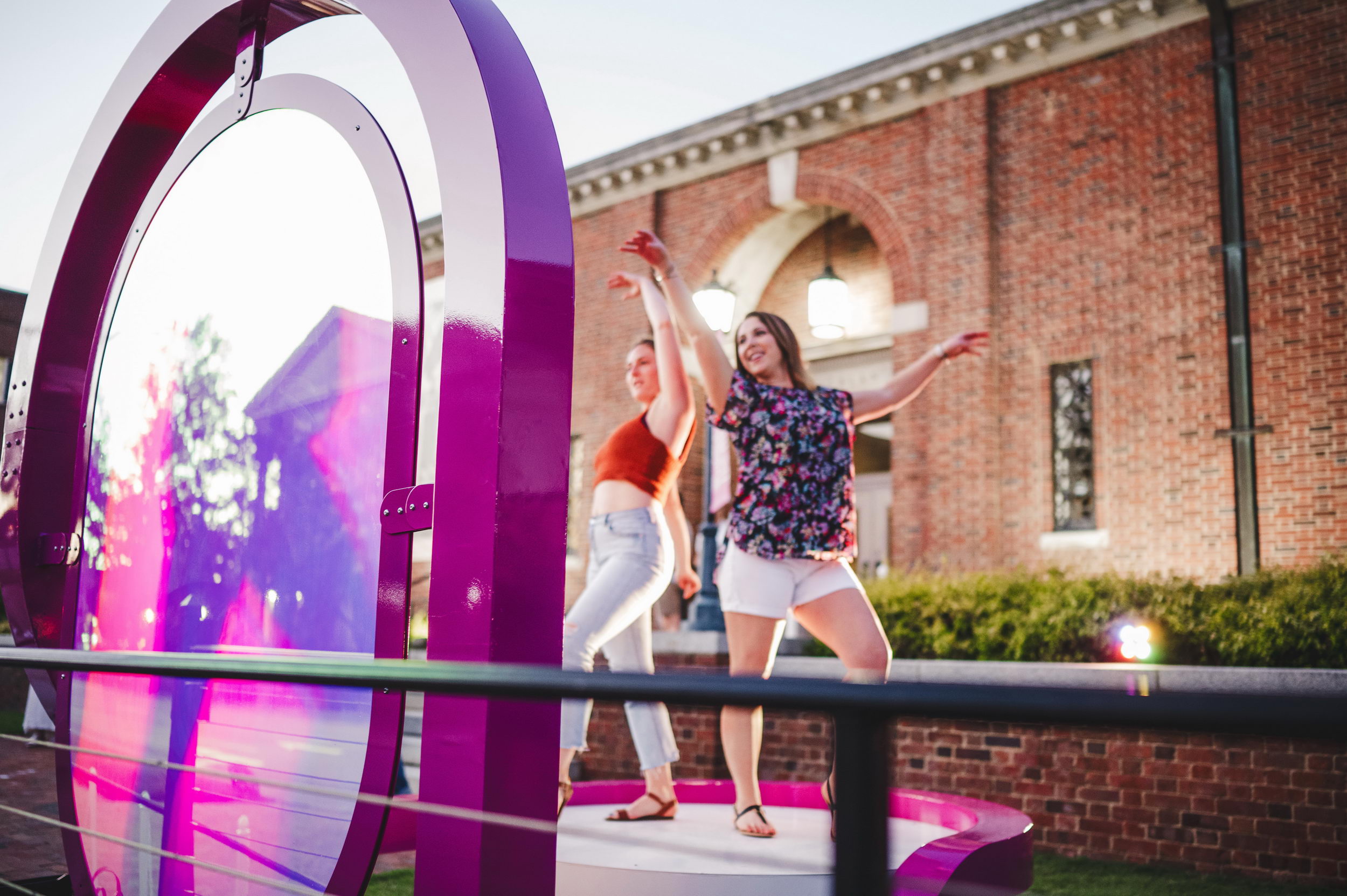
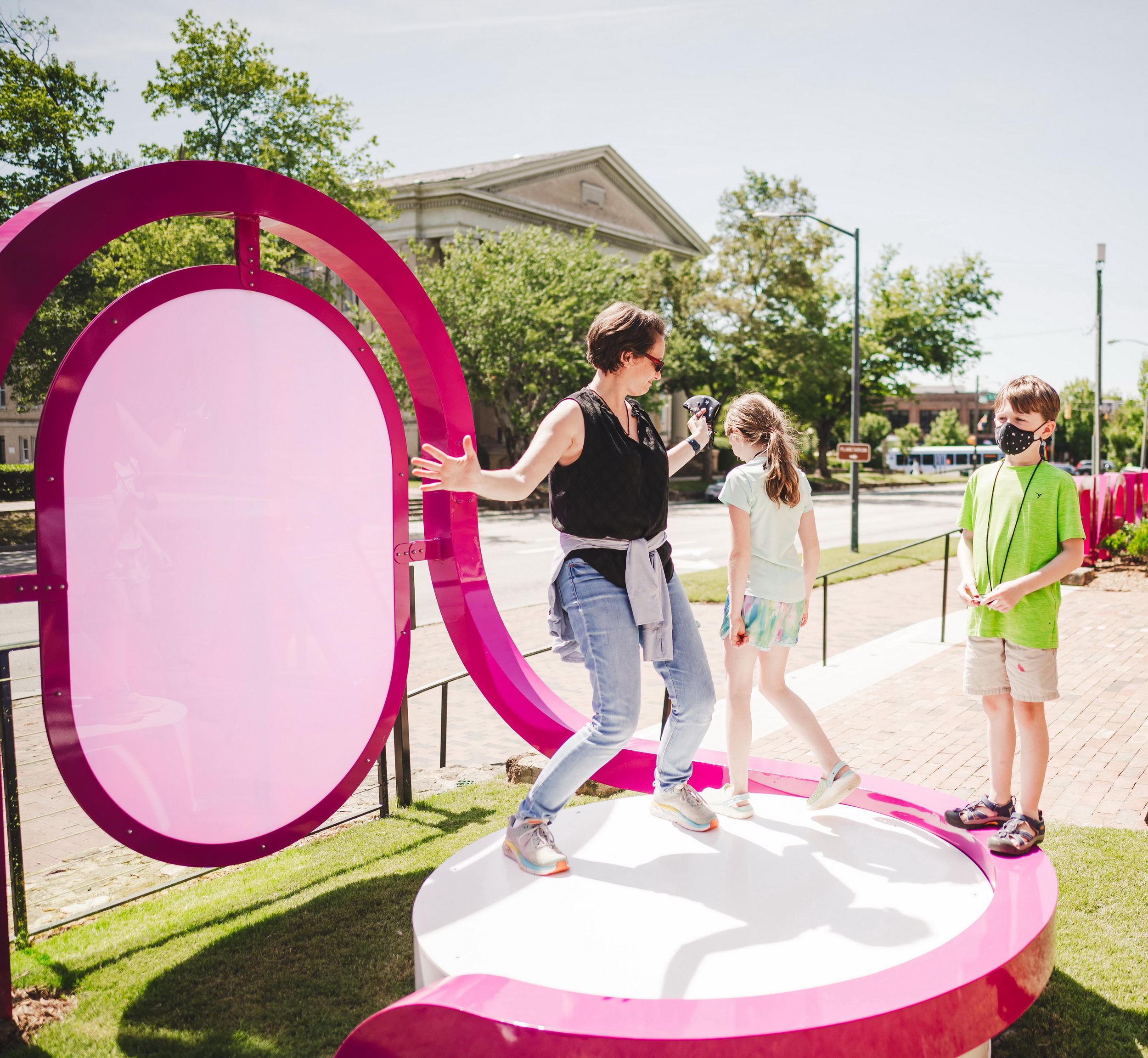
作品的色调是与Ackland的品牌重塑相协调设计的,有助于吸引人们进入博物馆,并连接他们新品牌和目标。该作品采用通用设计标准,使其成为任何人都可使用的包容性空间。草丛下方设有可持续的网状系统,以便轮椅进入空间,同时不影响地被植物的生长。
The color of the work was designed in coordination with therebranding of the Ackland, helping to draw people into the museum and servingas a connector to their new brand and mission. The work utilizes universaldesign standards to make it an inclusive space that anyone can use. Underneaththe grass sits a sustainable mesh system that allows for wheelchairaccessibility within the space, while still allowing the grass to grow upthrough it.
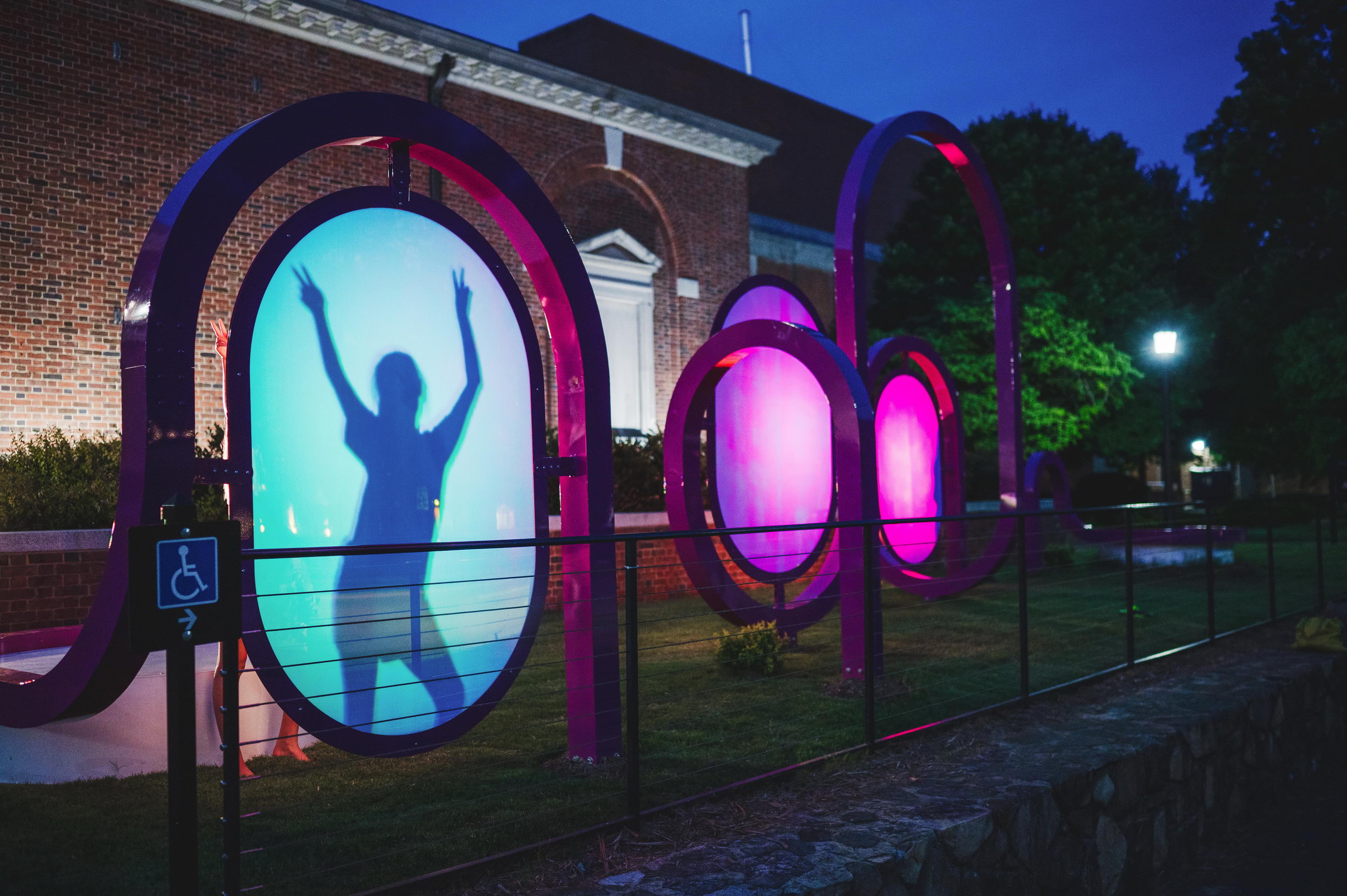
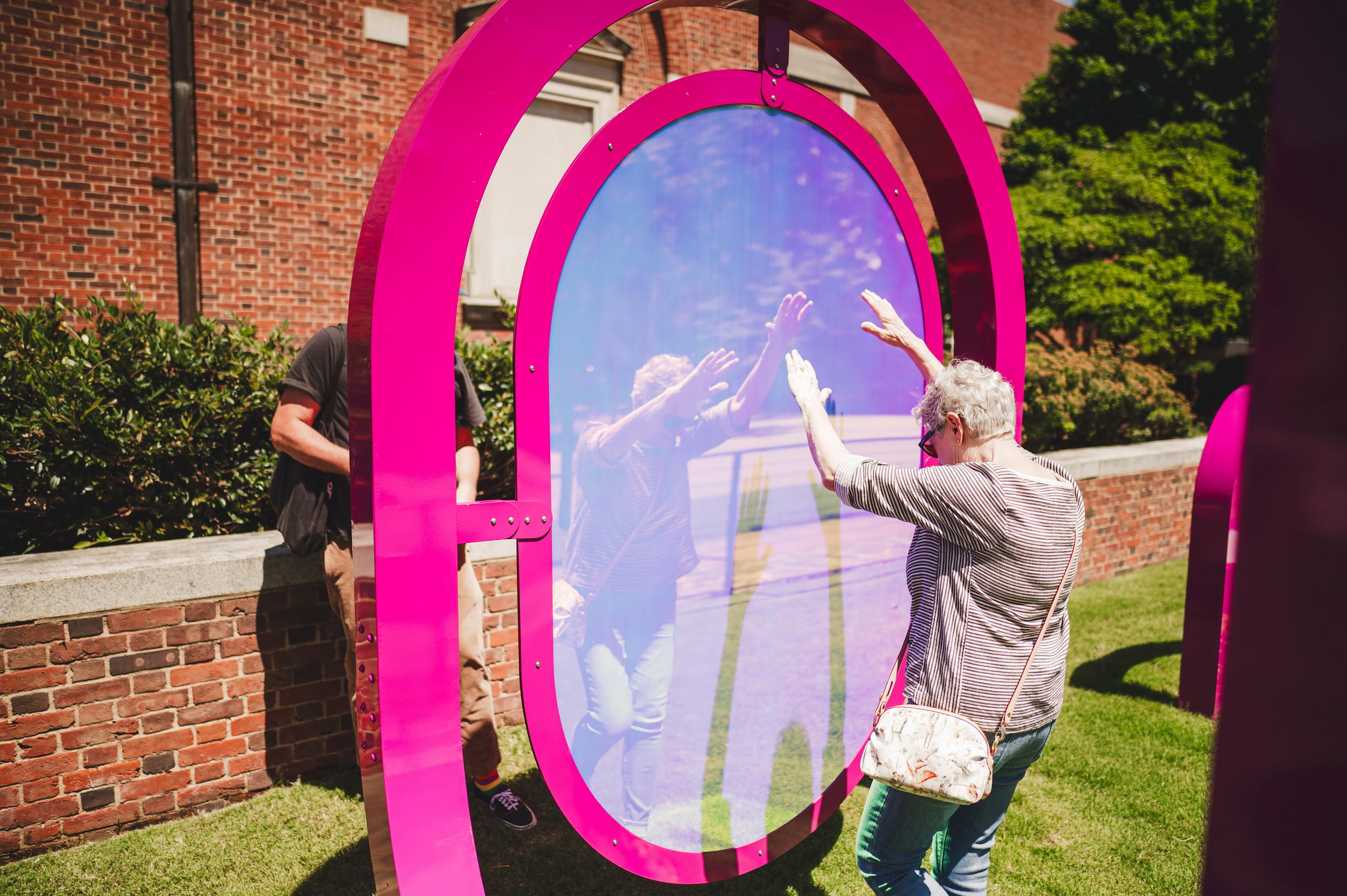
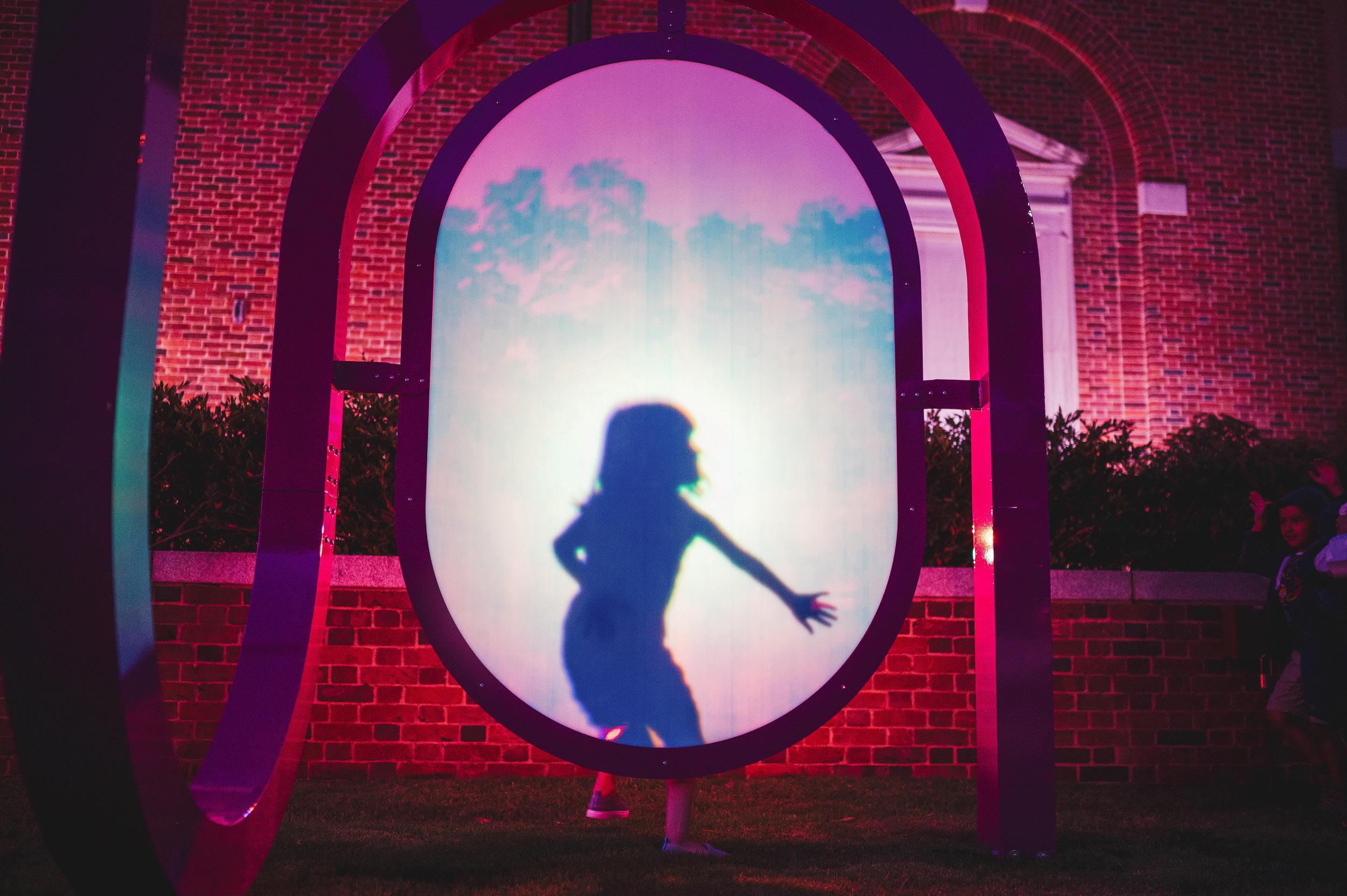

每道拱都同时作为周围环境的框架或镜面,人们可以通过不同的角度欣赏该区域。当一个人穿过装置时,他会意识到是由于他的移动,才使得镜面颜色发生了改变,给周围环境带上不同颜色的滤镜。该装置不仅能与行人进行互动,还通过其二向色透镜反射和折射周围环境,同时在地面和镜面本身上投射阴影,从而与环境形成呼应。
Each archway serves as a framed orreflective view of the surrounding context, allowing the user to view the areathrough a different lens. As one passes the work, they begin to realize thattheir movement changes the colors of the panels, sparking different filteredviews of the context around them. The installation not only responds to theuser, but also to the environment by reflecting and refracting the surroundingcontext through its dichroic lenses, while also casting shadows onto the groundand the panels themselves.

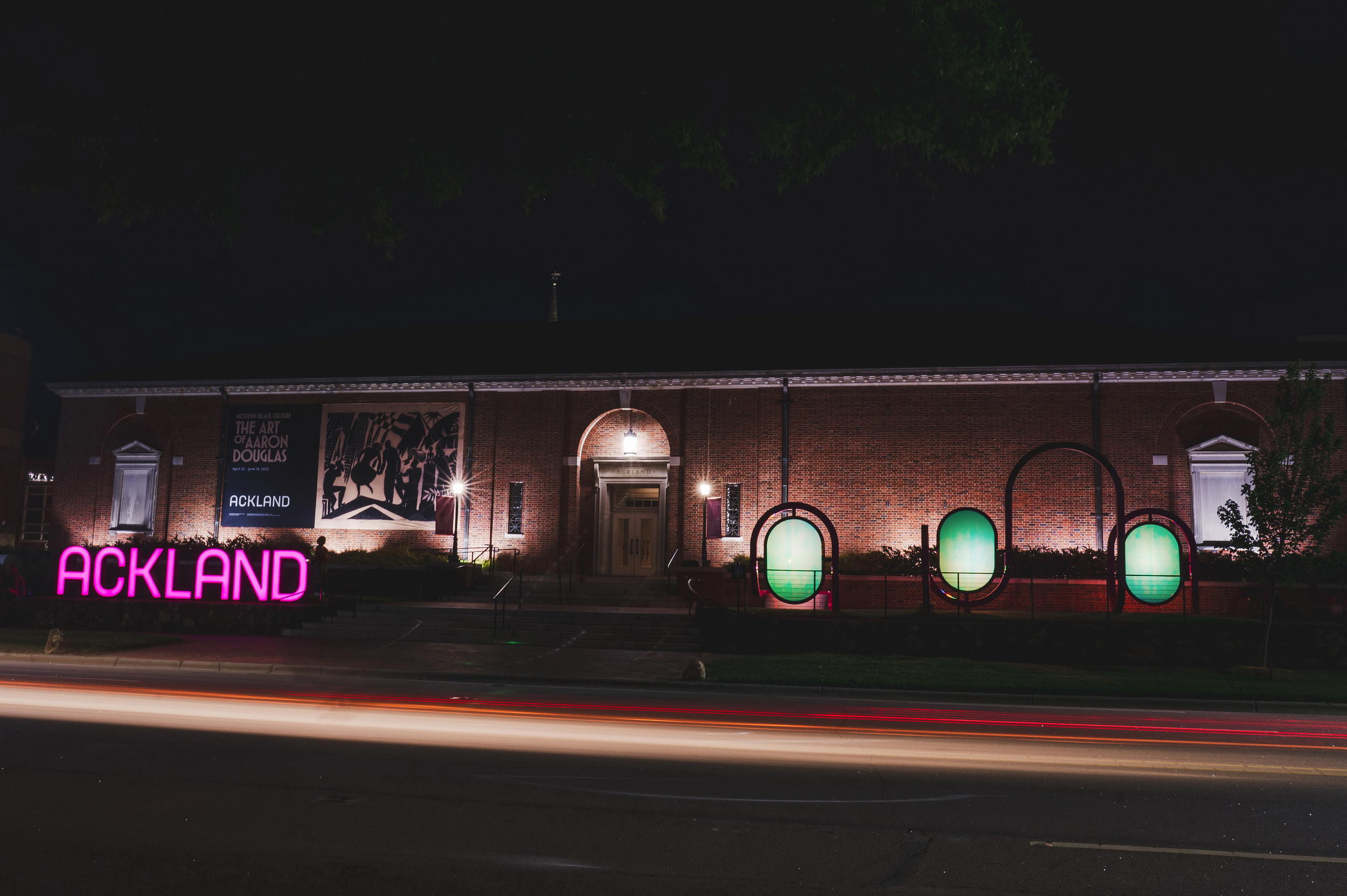
这件作品利用白天和晚上的光线为空间内带来不同的趣味和奇迹。在白天,人们可以与太阳互动,将阴影投射到镜面上,或改变空间内反射的颜色。这种相互作用激发了人与太阳之间的联系,并揭示了他们的行为如何开始在空间内产生反应。在夜间,通过使用红色,绿色和蓝色灯光来创建相同的效果,灯光与镜面的阴影混合,装置上的倒影也吸引人们进行与空间、或是同伴之间的互动。
The work utilizes light, both during the day and atnight, as a tool to evoke play and wonder within the space. During the day, theuser can interact with the sun to cast shadows onto the panels, or to shift thecolors reflected within the space. This interaction sparks a connection betweenthe person and the sun, and reveals how their actions begin to create areaction within the space. At night, this same effect is created through theuse of red, green, and blue lights that allow the user to color mix with theirshadows on the panels. The shadow play on the work becomes another way that theuser can begin to play with the work, space, and others.
▽白天效果
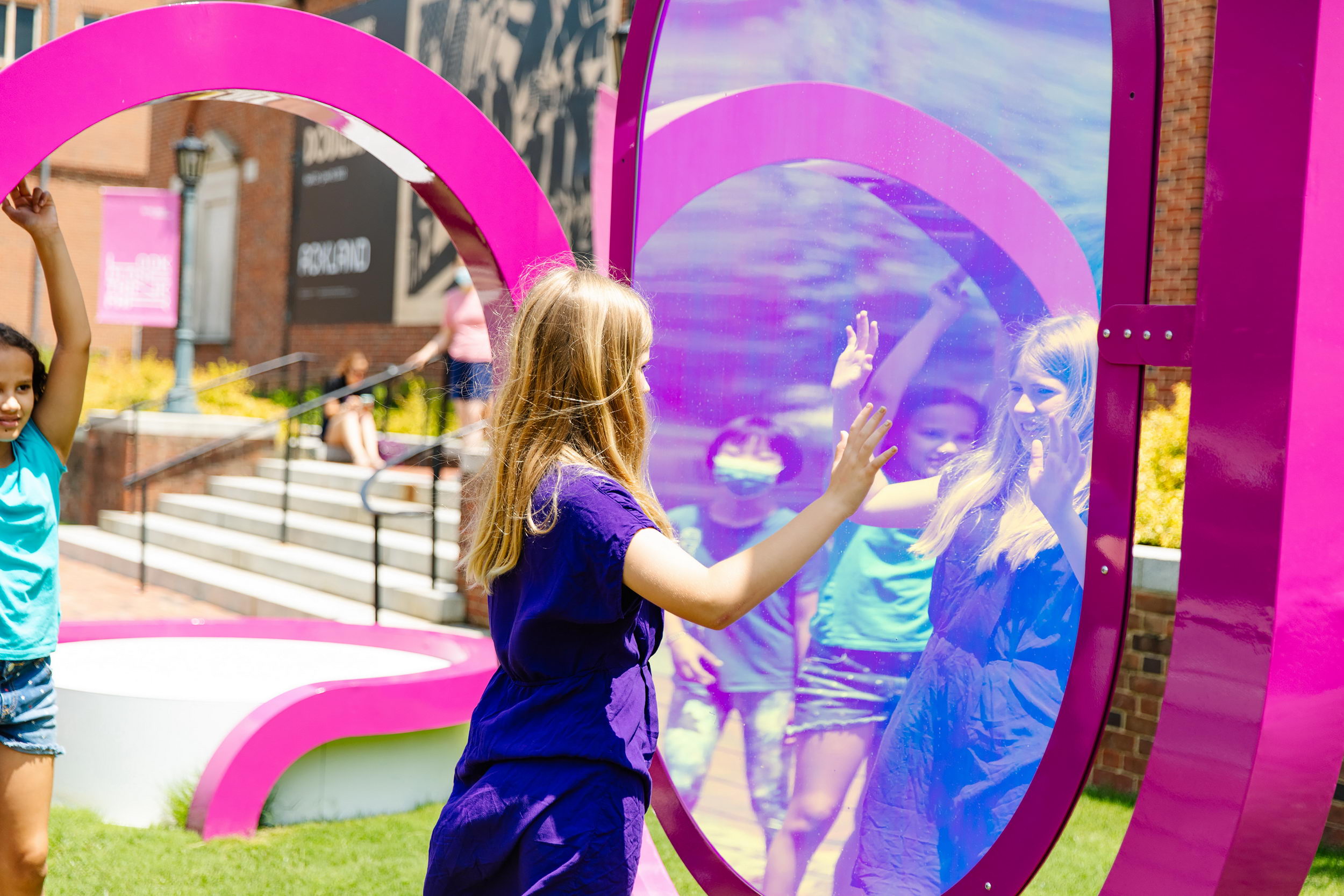

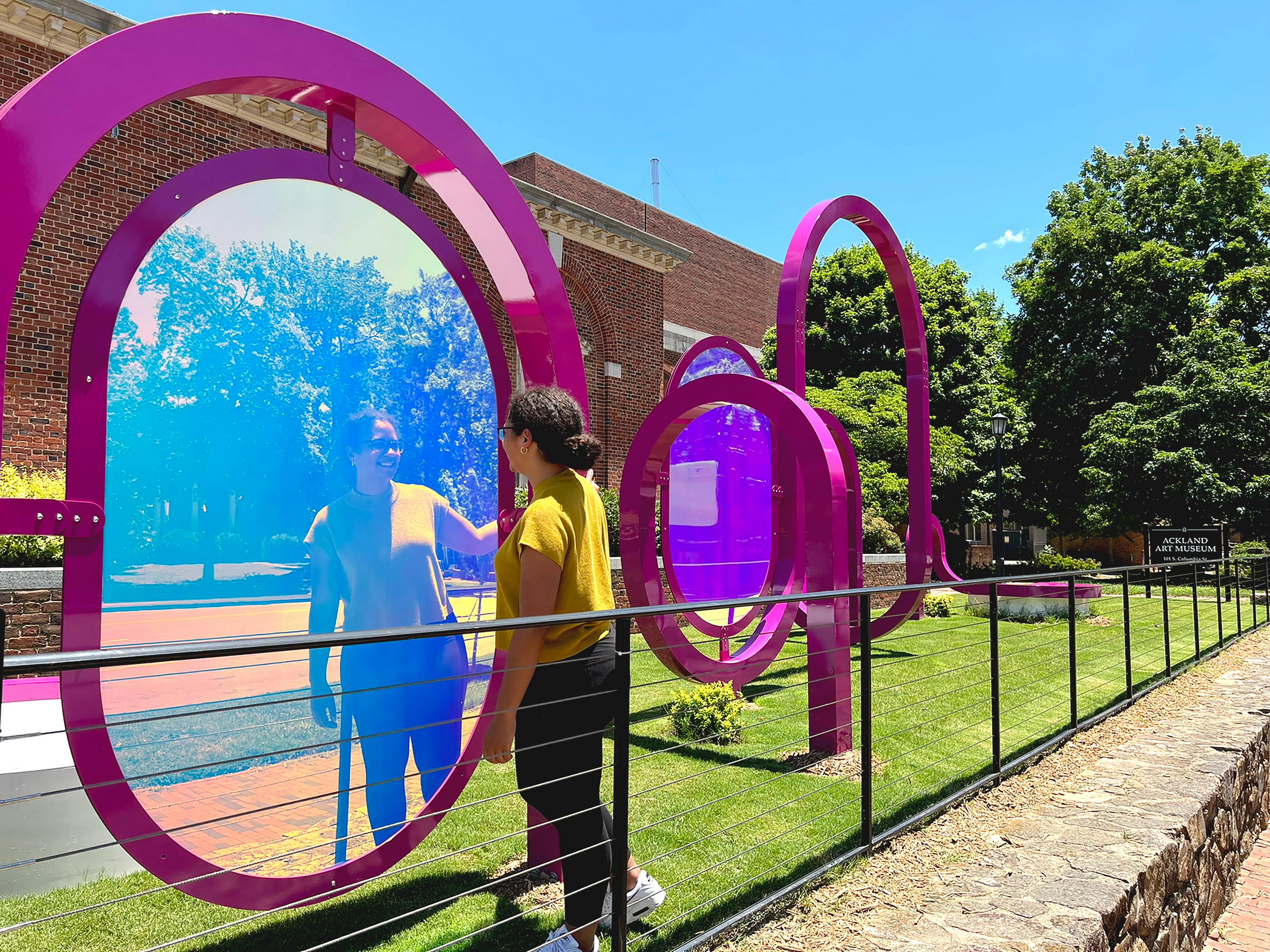
▽夜间效果

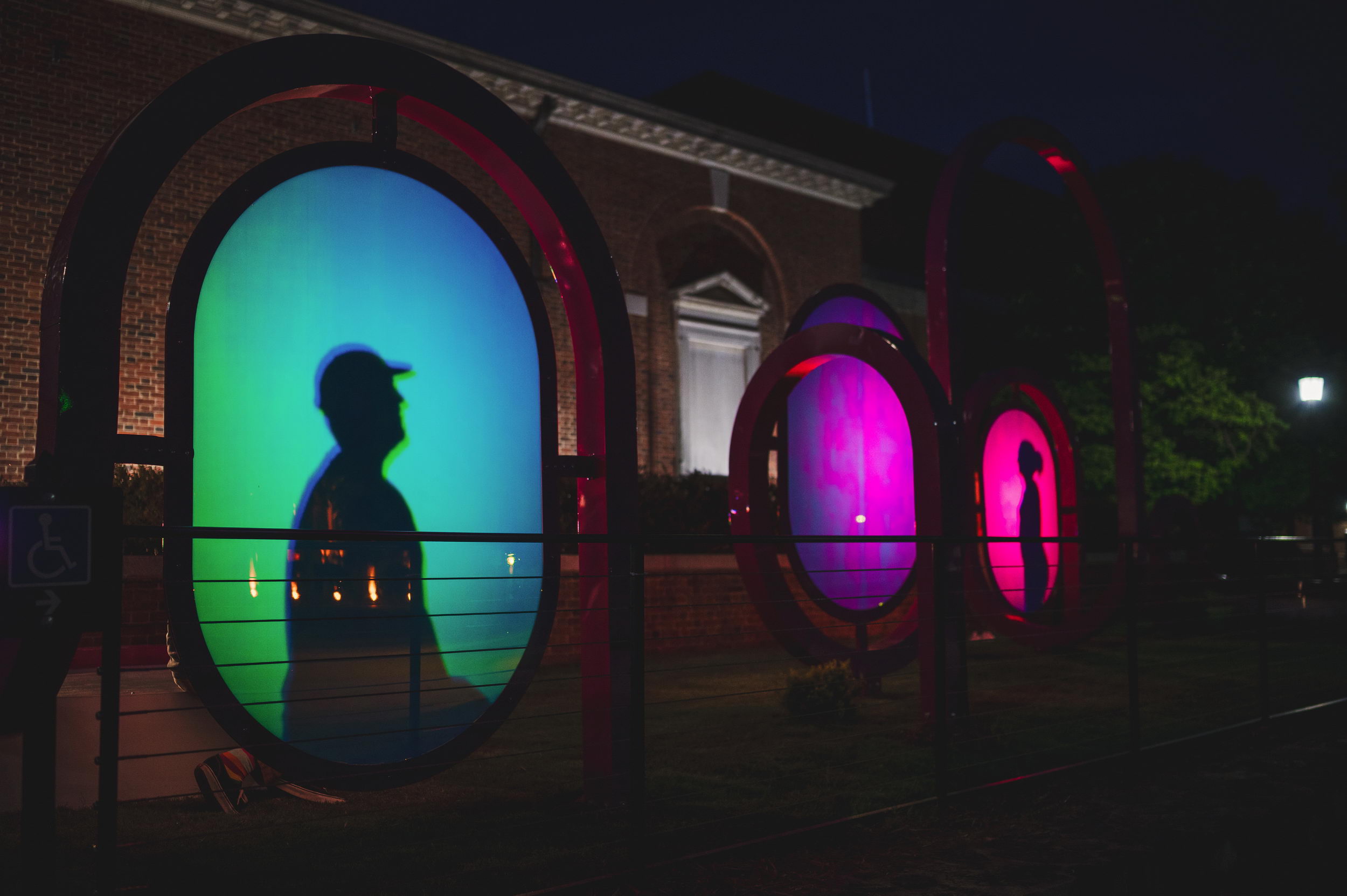 |  |
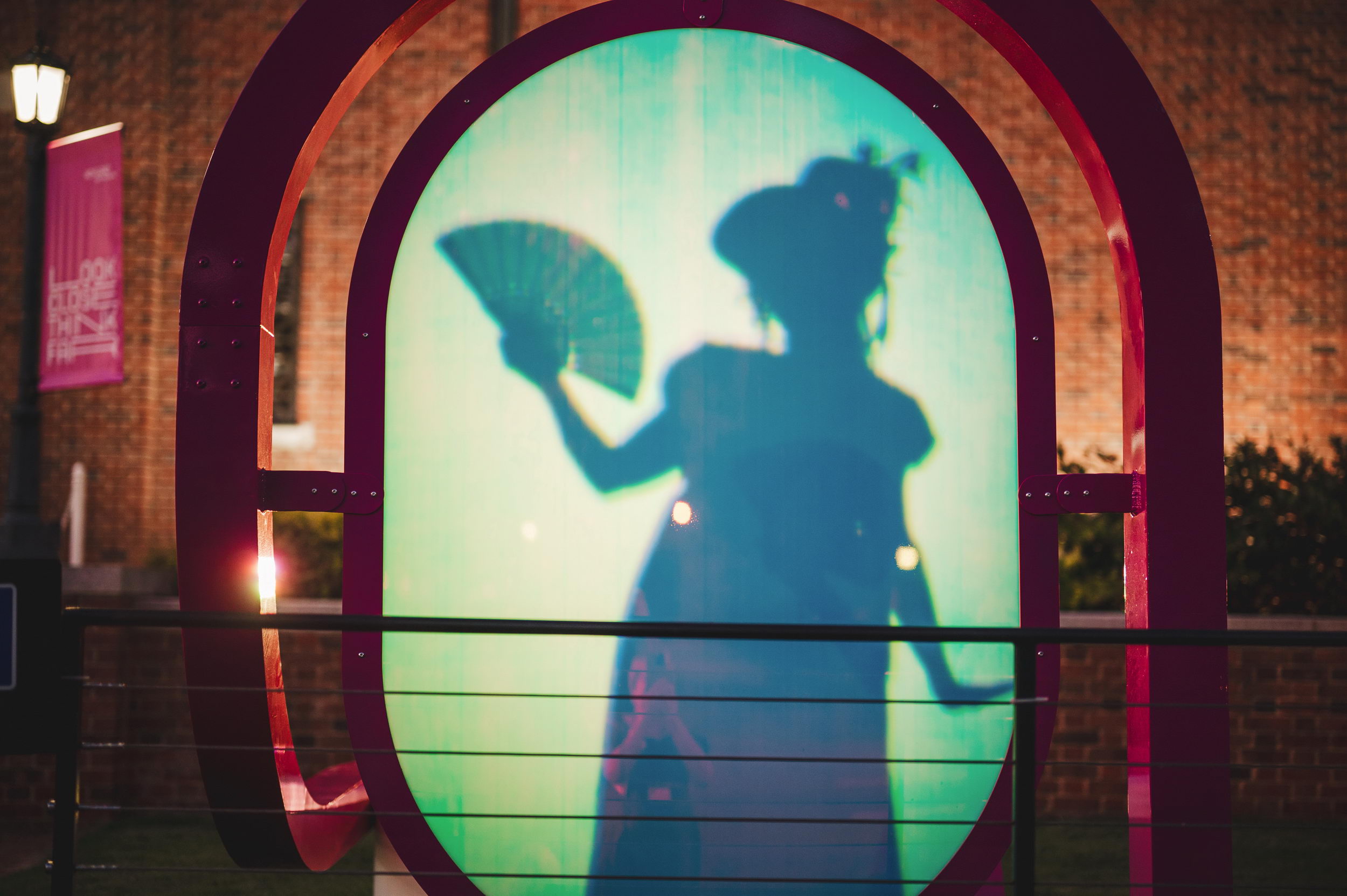
pARC是一座从物质到幻想等所有类型游戏的变革性里程碑,展示了如何将游戏用作唤起更具包容性和公平性公共空间的关键工具。
pARC becomes a transformative landmark forall types of play, from physical to fantasy, highlighting how play can beutilized as a critical tool in evoking more inclusive and equitable communalspaces.
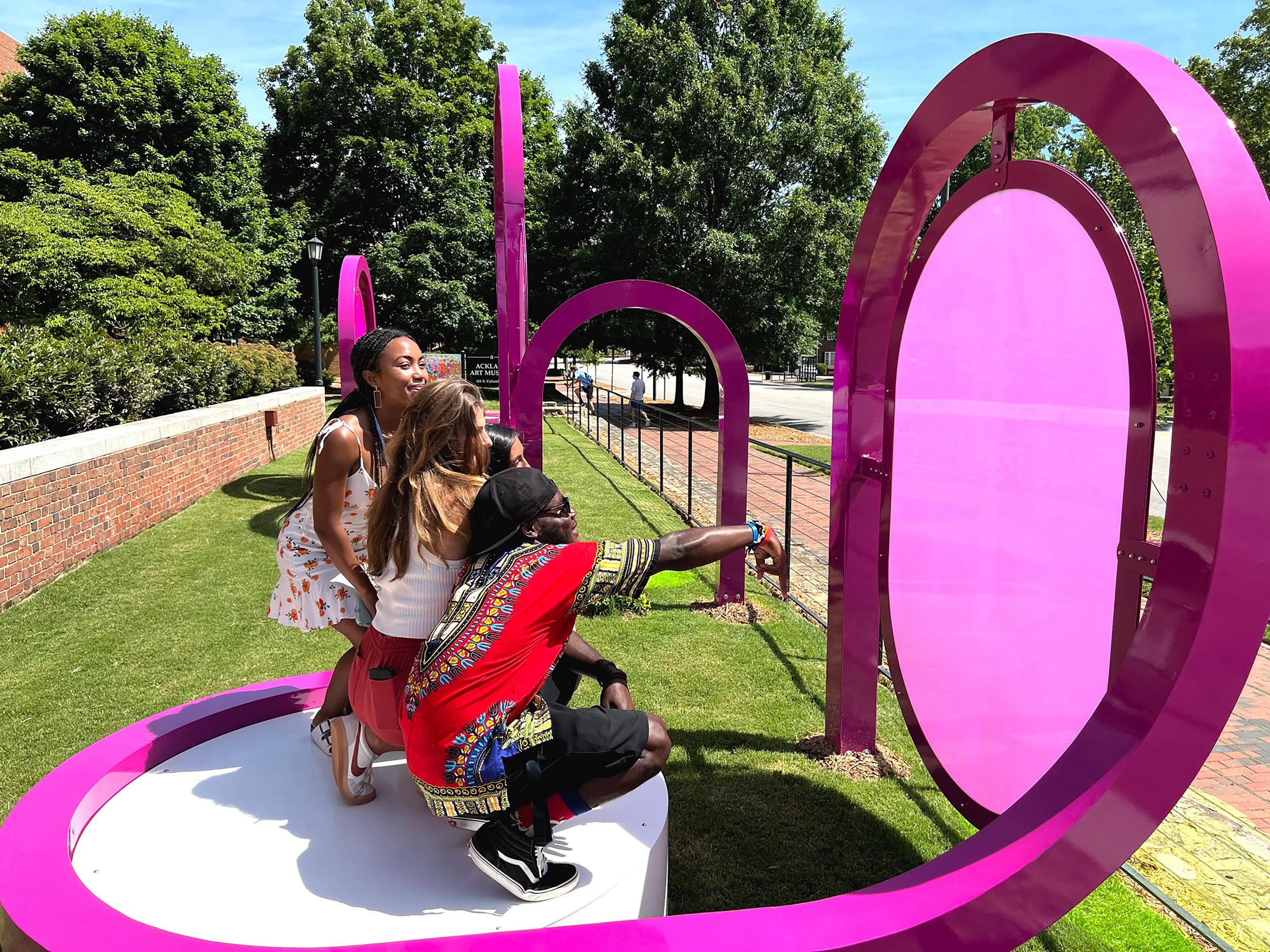
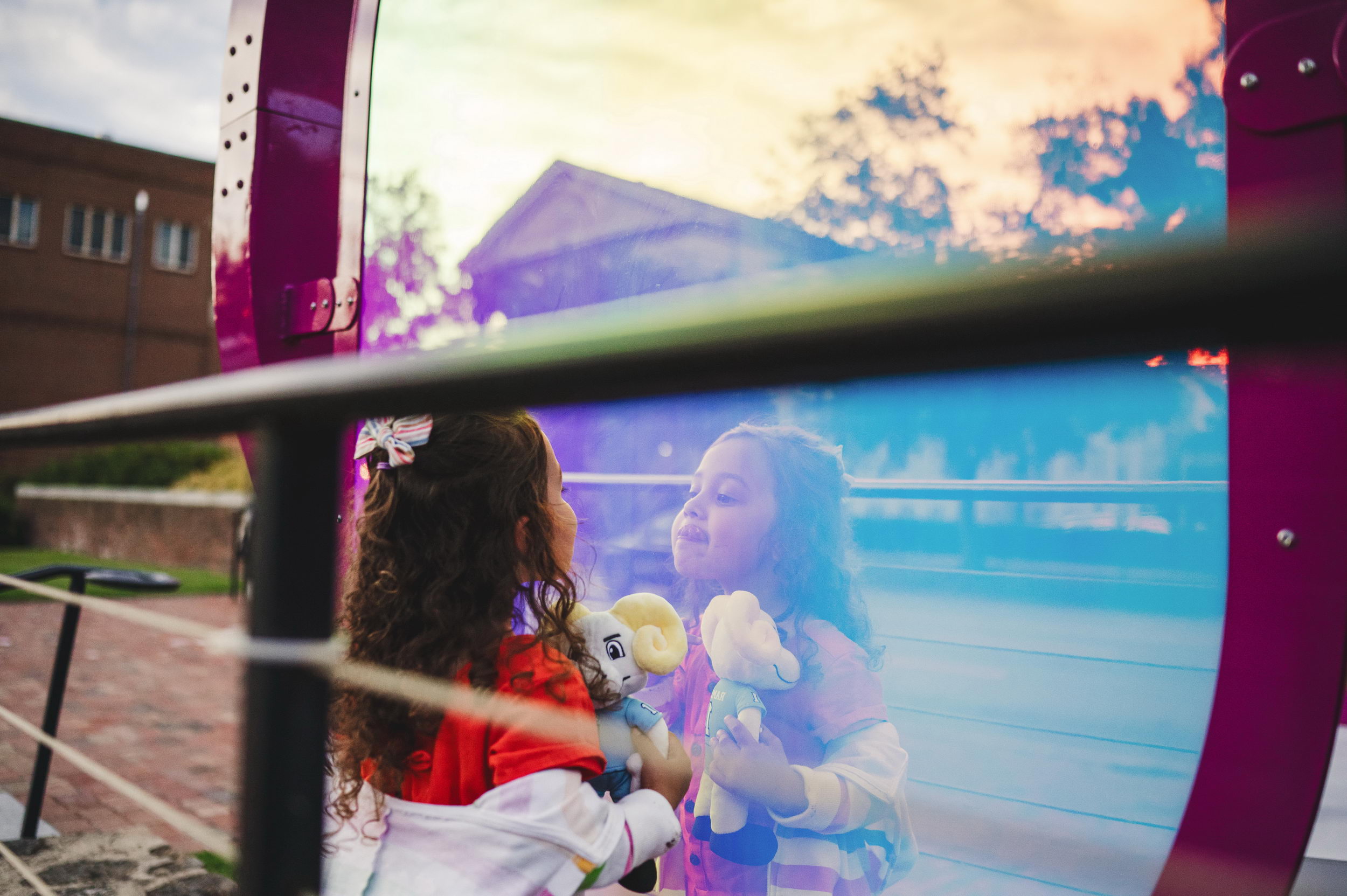
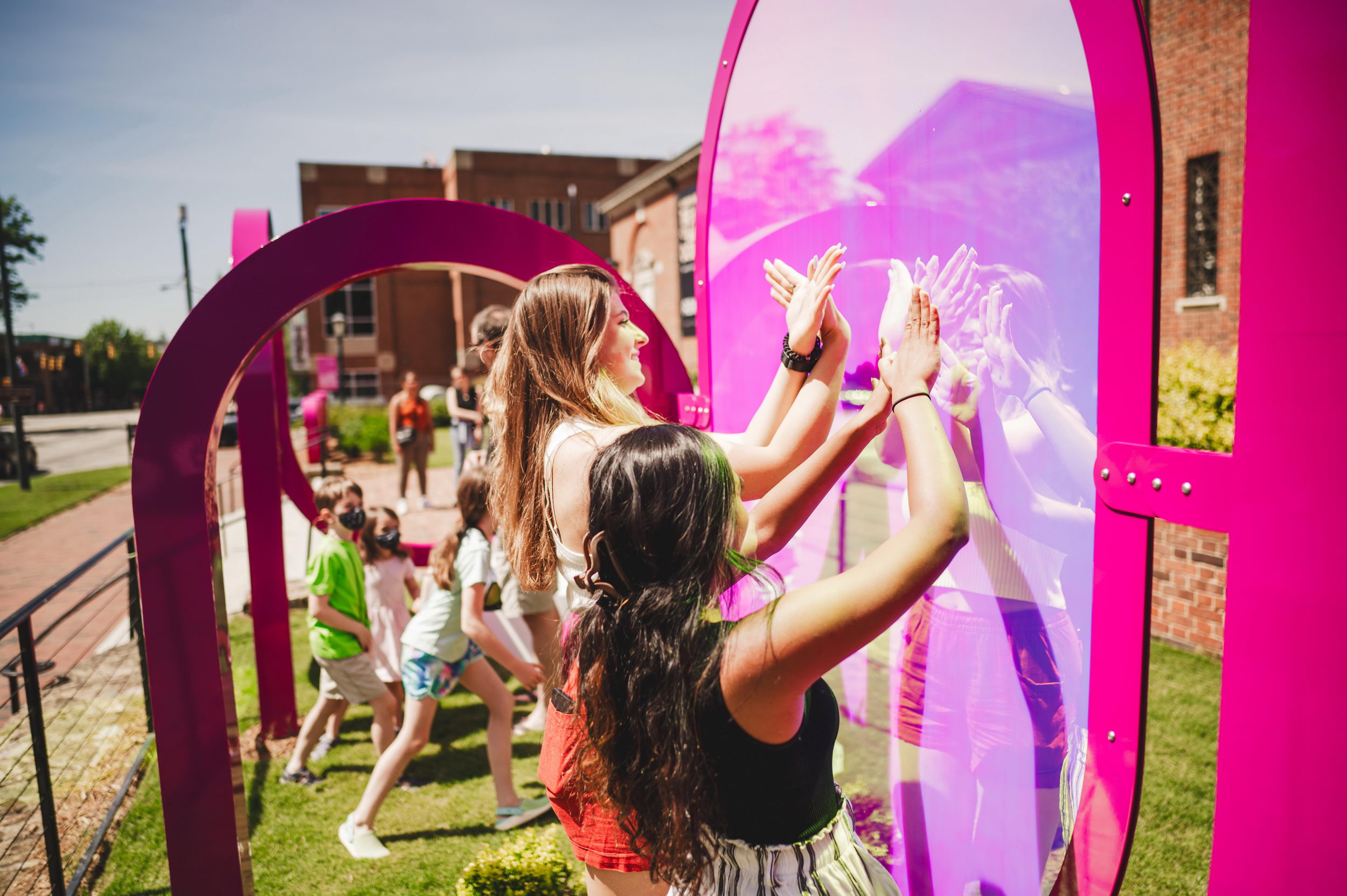

▽平面图
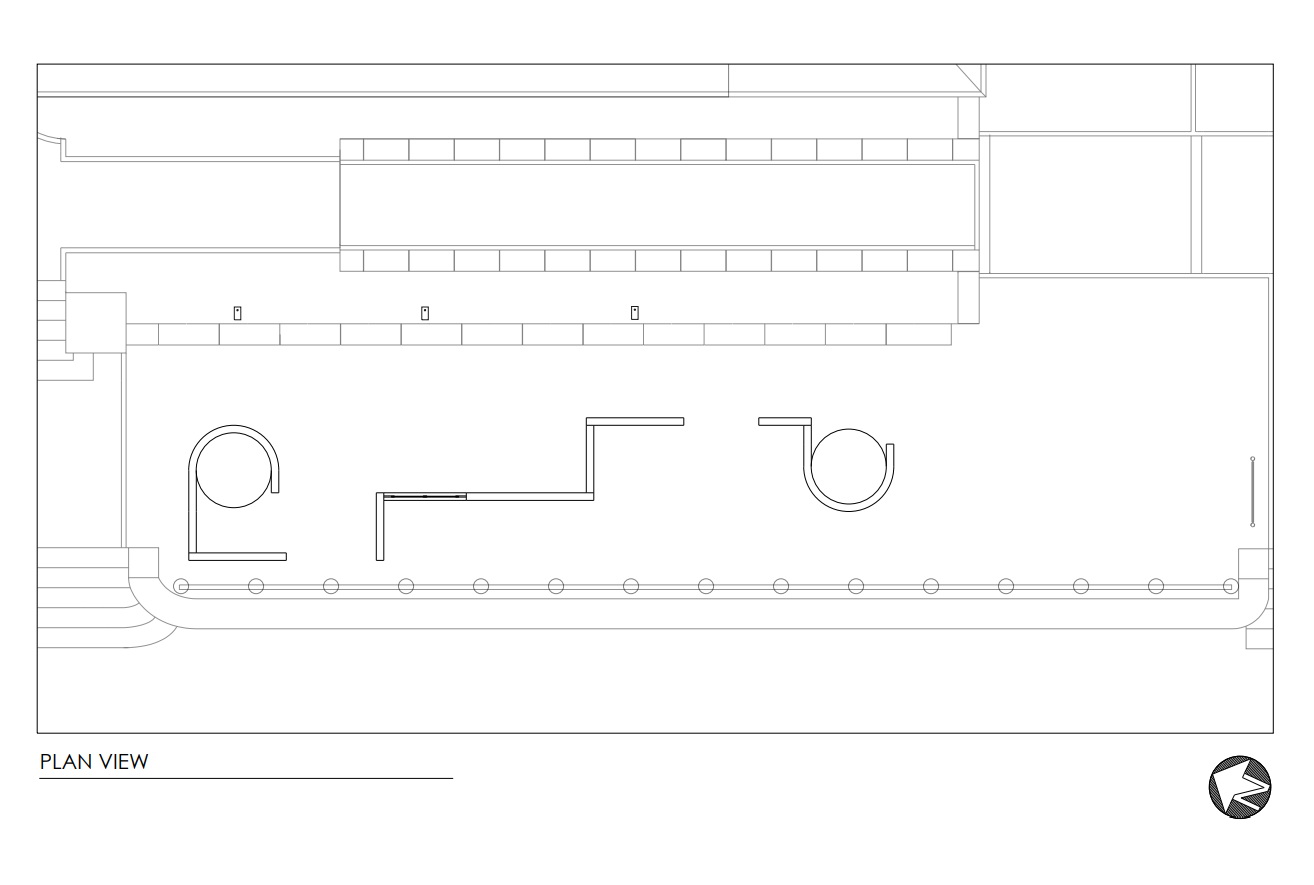
▽立面图
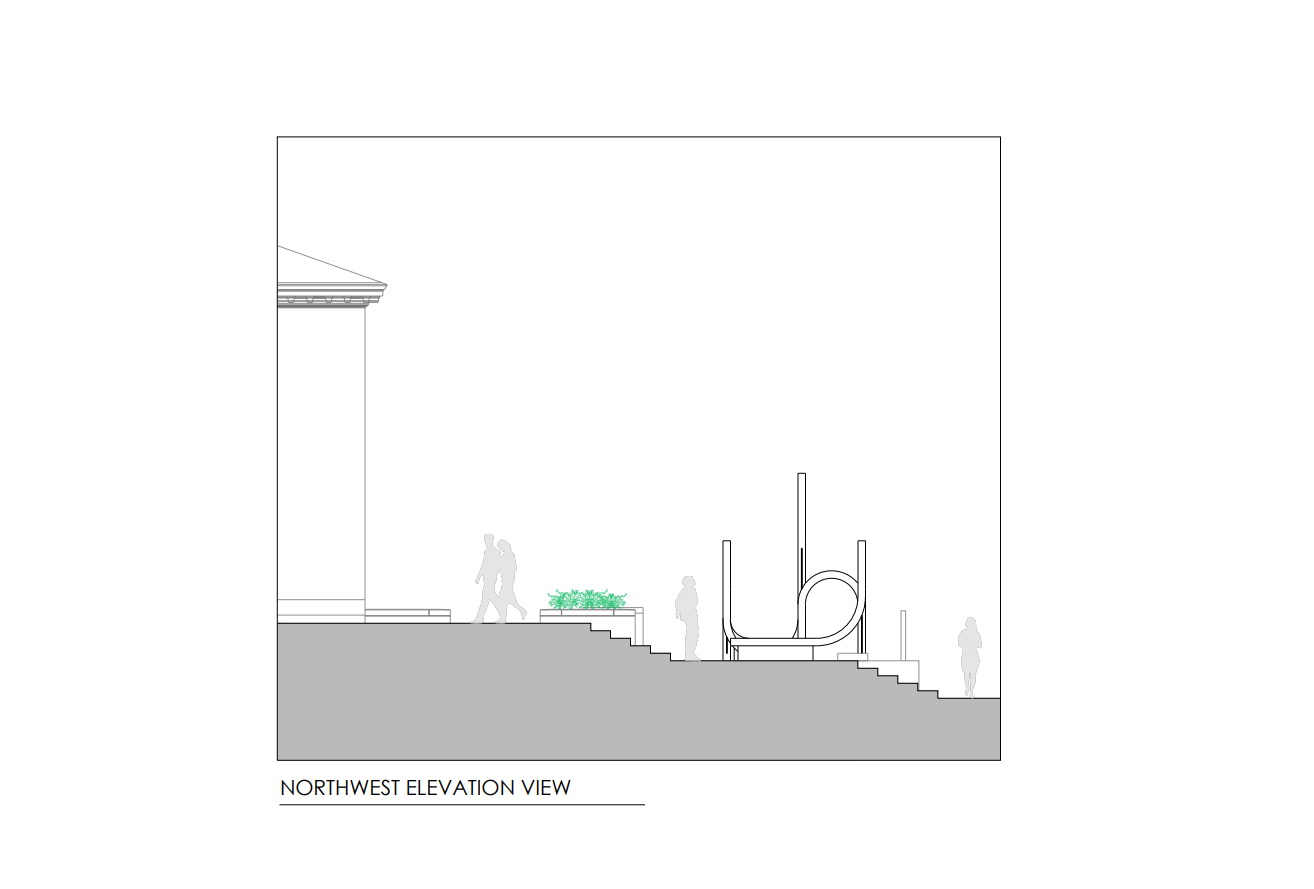
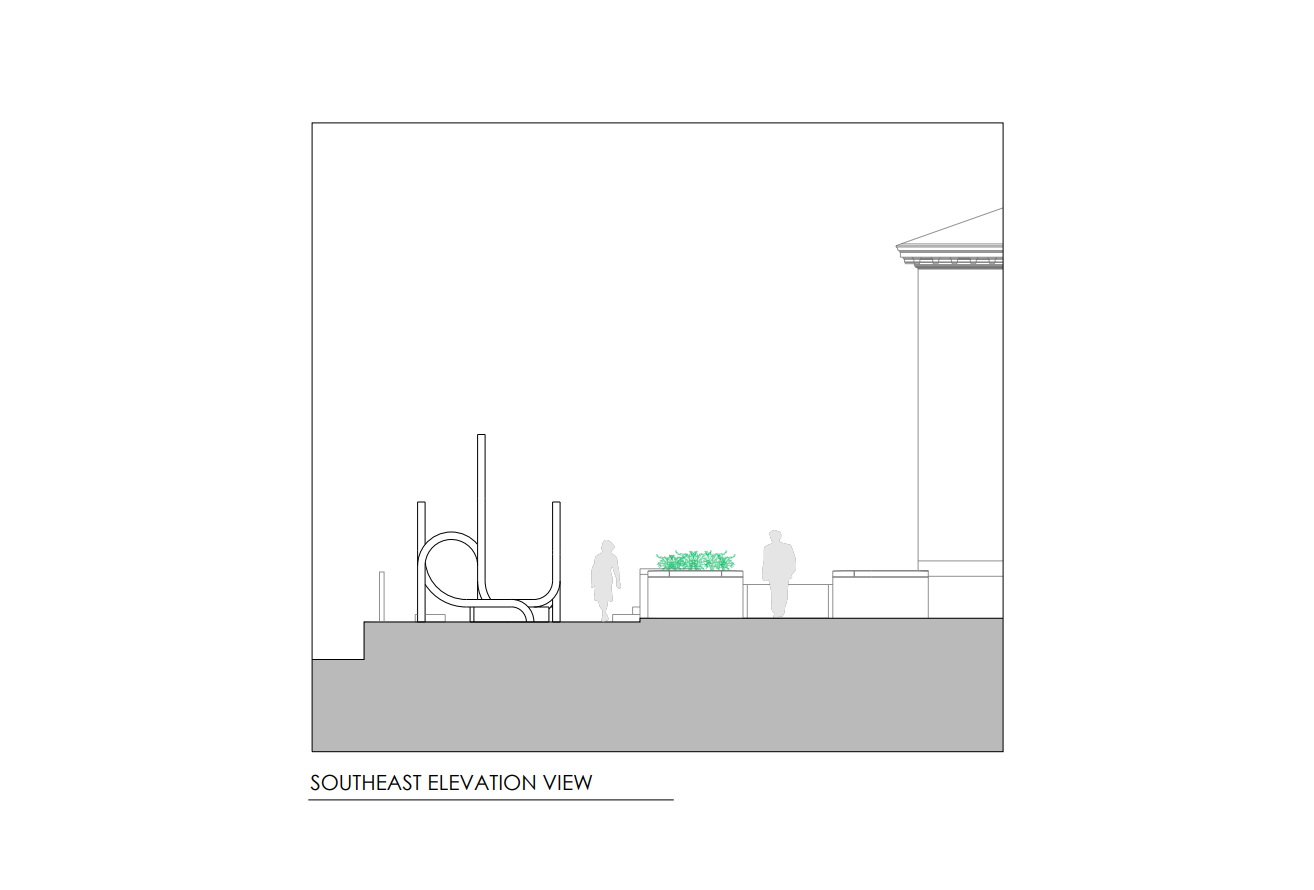
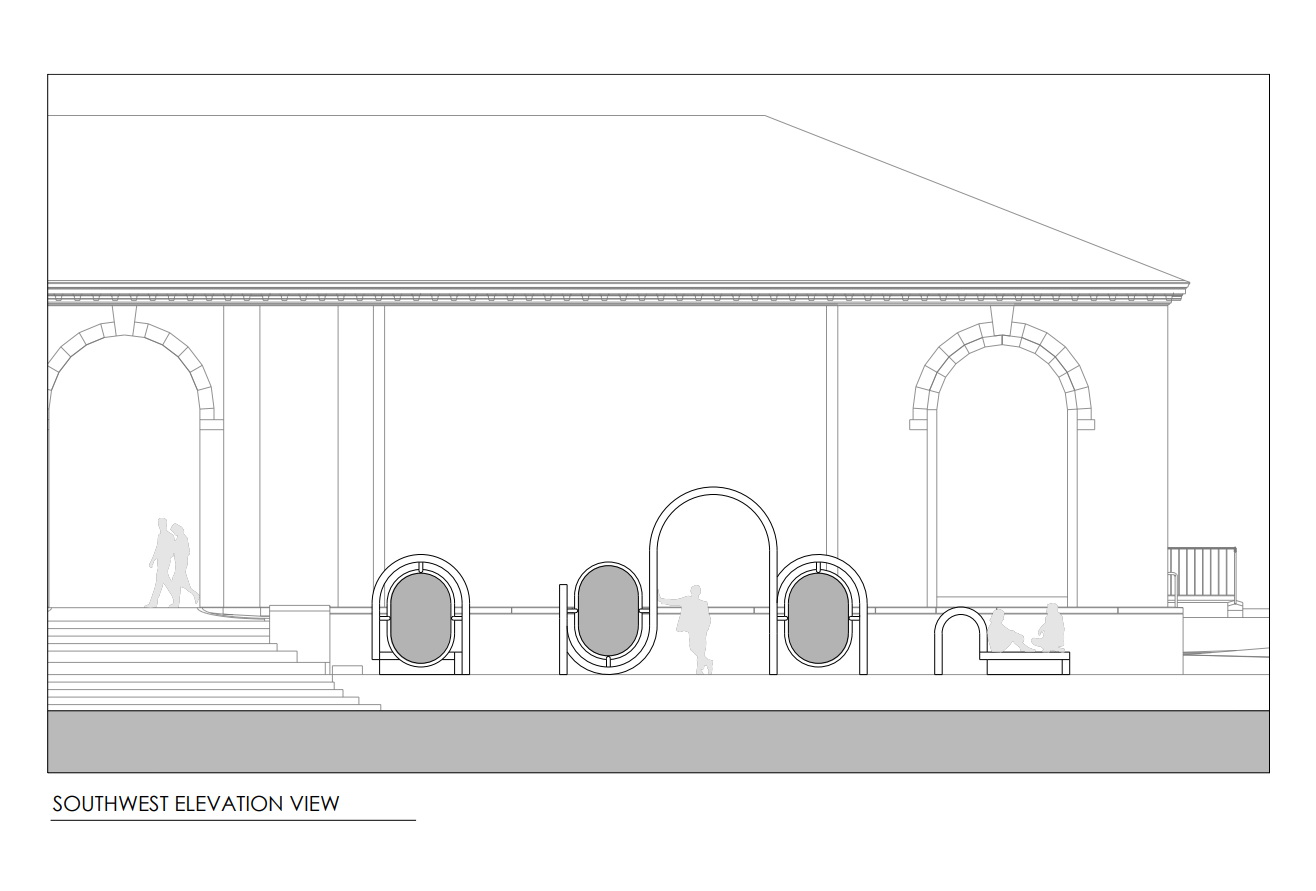
Technical sheet
Client: Ackland Art Museum & Universityof North Carolina
Year: 2022
Location: Chapel Hill, NC – USA
Project Size: 864 sq ft
Designers: The Urban Conga